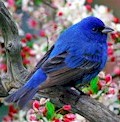Wild bird feeders can be found in countless styles and designs. There are tube feeders, platform feeders, hopper feeders, squirrel-resistant bird feeders, feeders for particular species of birds, and many more. Though the forms and functions of wild bird feeders are multitudinous, one thing should remain consistent - a high standard of quality. Poor bird feeder construction is not only potentially dangerous for birds, it will ultimately lead to frustration and more money spent on the part of the aspiring bird watcher. The good news is that a well-constructed wild bird feeder usually only costs a few dollars more than a shabby one. If you are in the market for a wild bird feeder (and you should be - bird watching is a very fulfilling hobby), make sure you purchase a well-made product. Following are a few things you should look for.
General sturdiness is imperative. A good, sturdy wild bird feeder will last for many years. Immediately inspect your new bird feeder both visually and with your hands. Look for cracks, rust, loose parts, or anything that seems awry to you. If the bird feeder is broken, or if there is anything about the bird feeder that you have questions about, bring it to the seller's attention. Most people in the birding business are after more than just profits; they want to share their love of bird watching, and are therefore very eager to help. If you want to purchase a wild bird feeder online, the same applies. Look into the return policy of online retailers before you buy, so you know what your options are. In most cases, it is very hassle free; they want your business and your referrals, so they need you to be satisfied.
Most tube style wild bird feeders are made of plastic and metal. The plastic should be strong and, again, free of cracks. The metal parts will likely be made of rustproof material, but check it all the same. The feeder ports, or the holes through which birds can access the seed, will be fitted with a grommet, usually made of metal. Ensure that the grommet is not loose or easily removed. It is there to reinforce the hole in the plastic and prevent cracking. It will often have a little perch attached at the bottom, also. The fact that your beloved backyard birds will alight on that perch is all the more reason to be sure that the grommet is stable.
Look at the method of construction. Screws and welds are strong and long lasting. Few, if any, nails should be used in its construction. Nails will come loose easily if the feeder is dropped, or even just through temperature changes, during which wood, plastic, and metal will expand or contract. The same is true of glue. Nails and glue should only be used on nonessential parts, such as decorative aspects.
These days, many wild bird feeders have moving, even motorized parts. This is particularly true of squirrel-resistant bird feeders. Check to make sure that the parts move easily, without grinding or catching. Motorized parts should not be moved by hand, as it could jam up the machinery. Motorized parts of wild bird feeders are usually weight-activated; to check them, simply apply a little pressure with your finger, if you can do so without hurting yourself or the feeder. If not, use a stick or a pencil, or wait until a squirrel tries to get at the seed. The only sound should be the whir of the tiny motor and possibly the angry chattering of the retreating squirrel. You should not hear squeaking (except from squirrels) or grating. Always follow the manufacturer's guidelines for maintenance.
Once you deploy the wild bird feeder, watch it for any issues that may not have been apparent in the initial inspection. Contact the seller as soon as possible if you see any problems. Most wild bird feeder stores will be very understanding as long as the problem did not arise through misuse or abuse.
Now that you are confident in the quality of your wild bird feeder, it is time to fill it with nutritious seed, and enjoy the birds!
